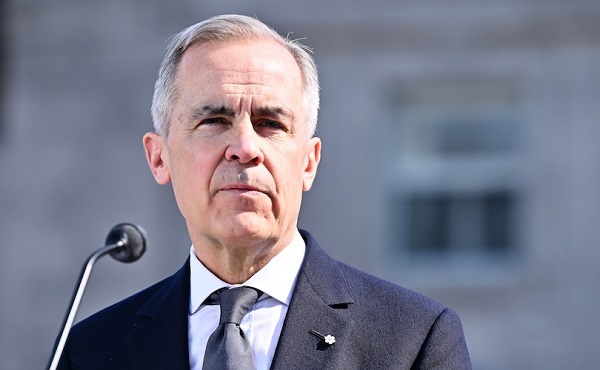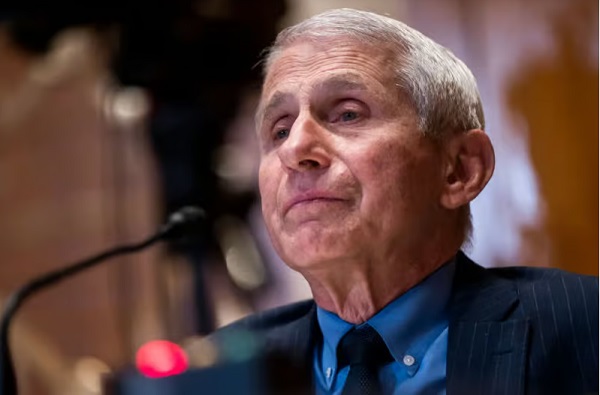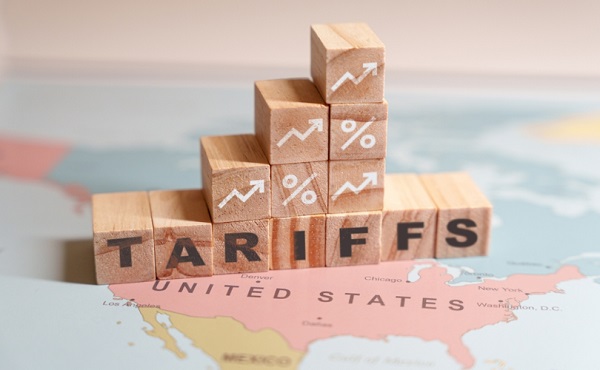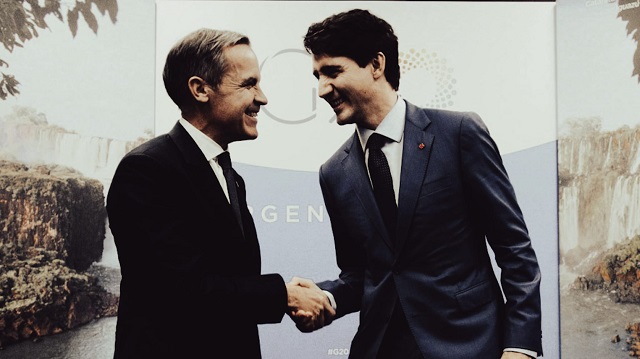Economy
Canada Treats Energy As A Liability. The World Sees It As Power

From the Frontier Institute for Public Policy
Research VP Marco Navarro-Genie warns that Canada’s future hinges on building energy infrastructure, not just expanding pipelines but forging a true North American energy alliance. With global demand rising and authoritarian regimes weaponizing energy, Ottawa’s dithering costs Canada $70 million daily. Sovereignty isn’t secured by speeches but by infrastructure. Until Canada sheds its regulatory paralysis, it will remain a discount supplier in a high stakes geopolitical game. Time to build.
Canada has energy the world is begging for, but ideology and red tape are holding us back
As Prime Minister Mark Carney met with U.S. President Donald Trump recently, energy should have been the issue behind every headline, whether mentioned or not. Canada’s future as a sovereign, economically resilient country will depend in no small part on whether the country seizes this moment or stalls out again in a fog of regulatory inertia and political ambivalence. Canada holds an underleveraged strategic card: the potential to be the world’s most reliable democratic energy supplier. Recent trade figures show Chinese imports of Canadian crude hit a record 7.3 million barrels in March, a direct result of newly expanded access to the Pacific via the Trans Mountain Expansion (TMX), a federally owned pipeline project that now connects Alberta crude to global markets through British Columbia’s coast. But one pipeline does not make a national strategy. Demand in Asia is growing fast. India is among the hungriest, but Canada’s infrastructure is nowhere near meeting that demand.
This matters not just for Canada, but for the United States as well. In a world where energy markets are weaponized and strategic reserves manipulated by authoritarian regimes, the case for a coordinated North American energy alliance is stronger than ever. Such an alliance should not erode national sovereignty. It should reinforce it, allowing Canada, the U.S. and Mexico to insulate themselves collectively from supply shocks and geopolitical blackmail while projecting democratic strength abroad.
But for that alliance to work, Canada must be a credible partner, not merely a junior supplier shackled by Ottawa-induced internal bottlenecks. While the U.S. has leveraged its shale revolution, LNG capacity and permitting reforms to pursue energy dominance, Canada dithers. Projects languish. Investment flees. And meanwhile, Canadian oil continues to flow south at a steep discount, only to be refined and resold, often back to us or our trading partners, at full global prices.

Yes, you read that right. Canada’s oil and gas is sold at a discount to U.S. customers, and that discount costs Canada more than $70 million every single day. The Frontier Centre for Public Policy has developed a real-time tracker to monitor these losses. This pricing gap exists because Canada lacks sufficient pipeline infrastructure to access overseas buyers directly, forcing producers to sell to the U.S., often at below-market rates.
Such massive losses should be unacceptable to any government serious about economic growth, geopolitical influence or environmental integrity. Yet Ottawa continues to speak the language of ambition while legislating the mechanics of paralysis. Stephen Guilbault’s statement that Canada already has enough pipelines speaks to more paralysis..
Canada’s energy infrastructure challenges are not just economic; they are matters of national defence. No country can claim to be secure while relying on another’s pipelines to transport its energy across its own territory. No country can afford to leave its wealth-producing regions boxed in by regulatory choke points or political resistance dressed as environmental virtue.
Our energy economy is fragmented. Western hydrocarbons are stuck inland and must pass through the U.S. to reach Eastern Canada or global markets eastward. This weakens national unity and leaves us exposed to foreign leverage. It also creates strategic vulnerabilities for our allies. American industries depend on Canadian crude. So do U.S. Gulf Coast refineries. And while American officials continue to treat energy as a tool of diplomacy and economic leverage, using energy exports to build alliances and reduce reliance on unstable regimes, Canada treats it as a domestic liability.
We need to shift the frame. Infrastructure isn’t just about steel in the ground; it’s the backbone of strategic autonomy. Pipelines, export terminals and utility corridors would allow Canada to claim its place in the emerging geopolitical order. They would also signal to global investors that Canada is open for business and capable of delivering returns without political obstruction.
The U.S. wants a stable, competent partner to help meet global energy needs. Increasingly, so does the rest of the world. But until we address our internal dysfunction and build, we’re stuck. Stuck watching global opportunities pass us by. Stuck selling low while others sell high. Stuck in a conversation about sovereignty we’re not structurally equipped to address, let alone win.
When Carney meets with Trump again, he would do well to remember that economic independence, not rhetorical unity, is the bedrock of sovereignty. Without infrastructure, Canada brings only words to a hard-power conversation.
Paraphrasing Thomas Hobbes, energy covenants without infrastructure are but words. It’s time to stop posturing and start building.
Marco Navarro-Genie is the vice-president of research at the Frontier Centre for Public Policy. He is co-author, with Barry Cooper, of Canada’s COVID: The Story of a Pandemic Moral Panic (2023).
Business
To Build BIG THINGS Canada Needs to Rid Itself of BIG BARRIERS

From Energy Now
By Deidra Garyk
We find ourselves at the intersection of energy reality and sustainability. The convergence means the way we do business globally is morphing. Some see opportunity in the most unlikely of places, while others only see obstacles.
A new report by the Public Policy Forum entitled Build Big Things: A playbook to turbocharge investment in major energy, critical minerals and infrastructure projects makes a case for why Canada should find the opportunities and how we can do that.
Analysis done by Calgary’s own economist and professor Trevor Tombe identified that Canada’s real GDP per capita growth from 2015 to 2024 was 1.4 percent. This puts us in second-last position among OECD countries.

Canada also took the penultimate spot among OECD countries for the time it takes to get a construction permit. As the graph shows, this isn’t a partisan problem; therefore, it can’t be corrected with a partisan solution. Although, noticeably, we have slipped further over the last few years. For multinational corporations that can invest anywhere, Canada’s ease of doing business appeal is not attractive, and that hampers our ability to build big things.

Fortunately, some jurisdictions are doing something about unnecessarily burdensome regulations. Alberta’s Red Tape Reduction initiative has removed over 200,000 regulations for net savings of $3 billion, a number tallied by the businesses impacted, not government. These are duplicative or archaic rules that added limited to no protections and removing them has not exacerbated risks. Work is still ongoing to ensure the balance is right.
BC is also fast-tracking projects, recognizing the need to build to remain a modern society. By shifting energy development permitting to the BC Energy Regulator, project timelines have improved.
The regulatory barriers affect more than traditional energy development. A new mining project in Canada can take anywhere from 15 to 25 years from application to operation. Energy, mining and infrastructure projects go through three to six years of federal regulatory review processes, in addition to provincial reviews. This is unacceptable if Canada is to meet the resource demands of the future.
The Report makes the case that, “[p]rioritizing nation-building projects such as ports, rail and roads is essential to strengthening internal economic linkages, enhancing export competitiveness and ensuring supply chains remain resilient and globally competitive.”
It goes on to cite, “barriers to success that include: burdensome regulatory processes and permitting procedures; insufficient financial supports and difficulty accessing capital, particularly in the crucial, high-risk development stages before getting to FID; inadequate infrastructure such as roads, bridges and ports; and a persistent lack of capacity and capital among Indigenous groups to participate fully as partners in new projects.”
There’s waning interest from the public in shrill anti-resource activism that puts their current lives and livelihoods at risk. Average weekly earnings in Alberta haven’t changed over the last ten years. Canada is one of the most indebted countries in the world, including subnational and consumer debt. This means that we are not as easily able to strategically act to deal with issues or embrace opportunities.
The report offers four strategic pillars for action:
- Co-ordinated financing: Align public and private funding sources to support priority projects and close investment gaps. Governments should not always aim to be the first or primary source of funding. The most effective role for public financing is often in de-risking projects,
- Efficient and effective regulations: Reconfigure regulatory and permitting processes to get to “yes” much more quickly, providing clearer timelines, improved efficiency and effectiveness, greater certainty, enhanced environmental performance, and a more strategic role for economic regulators across jurisdictions.
- Enabling critical infrastructure: Take a systems-level approach to planning to ensure that foundational infrastructure and skilled labour are in place to support future growth.
- Increasing Indigenous economic participation: Strengthen partnerships between project proponents, government institutions and Indigenous rights-holders to support meaningful Indigenous involvement in major projects, including through improved access to capital, stronger ownership opportunities and continuous capacity building.
Canadians must define who we are and who we want to be, on our own terms. We must change the mindset from fear to opportunity and be proud to be producers of primary materials. We need a kick in the pants to move towards taking calculated risks rather than running away, hoping for security because of our fears. We must build big things.
Deidra Garyk is the Founder and President of Equipois:ability Advisory, a consulting firm specializing in sustainability solutions. Over 20 years in the Canadian energy sector, Deidra held key roles, where she focused on a broad range of initiatives, from sustainability reporting to fostering collaboration among industry stakeholders through her work in joint venture contracts.
Outside of her professional commitments, Deidra is an energy advocate and a recognized thought leader. She is passionate about promoting balanced, fact-based discussions on energy policy, and sustainability. Through her research, writing, and public speaking, Deidra seeks to advance a more informed and pragmatic dialogue on the future of energy.
Business
The world needs energy. Canada has the supply. Other nations eagerly fill the demand.

From the Fraser Institute
Spend time on the websites of Canada’s leading environmental non-governmental organizations (ENGOs) and you will see repeated references to the “energy transition”—the shift away from fossil-fuel energy sources to no- and low-carbon alternatives, to help lower the greenhouse gas (GHG) emissions that lie behind concerns over climate change.
While most countries—albeit not Donald Trump’s America—notionally support the 2015 Paris Agreement goal to limit global temperature increases to between 1.5 and 2.0 degrees centigrade, few are on track to slash their emissions sufficiently to reach that target. Indeed, emissions are still climbing, mainly due to the ravenous appetite for energy in many emerging economies.
Notwithstanding decades of climate change conferences, humanity remains firmly wedded to fossil fuels, which currently supply about four-fifths of global primary energy demand—a share that has fallen only slightly since the late-1990s. Moreover, as Canadian energy scholar Vaclav Smil recently noted, the absolute quantity of fossil fuels consumed by the world has risen by more than half since 1997.
Stupendous amounts of energy are needed to provide electrical power, for heating and cooling, transportation and agriculture, and to support many industrial processes. Today, fossil fuels are ubiquitous in all these areas. Only in the case of electricity have we observed a quantitatively significant move away from fossil fuel energy.
A glance at recent energy supply/demand projections highlights the dominant role of fossil fuels in the world’s energy system. The latest global outlook from multinational giant Shell is a good example.
According to Shell’s 2025 baseline forecast, worldwide demand for energy “will continue to increase as the global population grows and living standards rise.” By 2050, energy demand “could be nearly a quarter higher than in 2024 depending on economic growth rates, energy efficiency gains and the pace of electrification.”
Global oil demand is expected by grow by another 3-5 million barrels per day into the mid-2030s, confounding earlier forecasts of imminent “peak oil” consumption. Shell notes that “petroleum fuels remain affordable and convenient in transport, particularly in long-distance haulage, aviation and marine.” Oil also remains crucial to the petrochemicals sector.
Meanwhile, natural gas use is set to increase into the 2040s at least, with liquefied natural gas (LNG) representing a steadily rising share of the total natural gas market. Natural gas is a principal source of “industrial heat, fuel for power generation and heat for buildings.” It’s also critical to “helping the world move away from coal.”
Significant investments in oil and gas exploration, production, infrastructure and downstream processing “will be required for decades to come.” So much for the argument of Canadian environmental activists that it’s time to starve the oil and gas business of capital.
What are the implications of all of this for Canada?
We are endowed with an almost unmatched abundance of energy riches, notably the world’s third-largest oil reserves and vast amounts of natural gas. Canada is also a global leader in producing electricity from carbon-free sources. And energy plays an outsized role in our economy, directly accounting for one-tenth of GDP and supplying roughly a quarter of the country’s merchandise exports.
As a major energy producer, Canada has well-respected environmental standards and rigorous project approval and permitting processes. These are a long-term competitive advantage.
Even as efforts continue to reduce the carbon intensity of energy use and expand renewable power capacity, a growing world will need prodigious quantities of energy including oil and gas. Canada is well-placed to help meet it.
-

 Brownstone Institute2 days ago
Brownstone Institute2 days agoAnthony Fauci Gets Demolished by White House in New Covid Update
-

 Business2 days ago
Business2 days agoSobering reality check – Trump is right: Canada’s economy can’t survive a fair trade agreement with the US
-

 Automotive2 days ago
Automotive2 days agoCanada’s EV house of cards is close to collapsing
-

 Business2 days ago
Business2 days agoPatriotic Millionaires concept of tax ‘fairness’ ignores tax facts in Canada
-

 Business2 days ago
Business2 days agoFederal government should cut red tape to spur economic growth
-

 Crime2 days ago
Crime2 days agoMexican Cartels Expanding Operations in Canada, Using Indigenous Reserves as Factory Hubs
-

 espionage1 day ago
espionage1 day agoChinese Nationals Charged with Conspiracy and Smuggling a Dangerous Biological Pathogen into the U.S.
-

 armed forces1 day ago
armed forces1 day agoTrump rebuilds the ranks: Army crushes 2025 recruitment goal early





